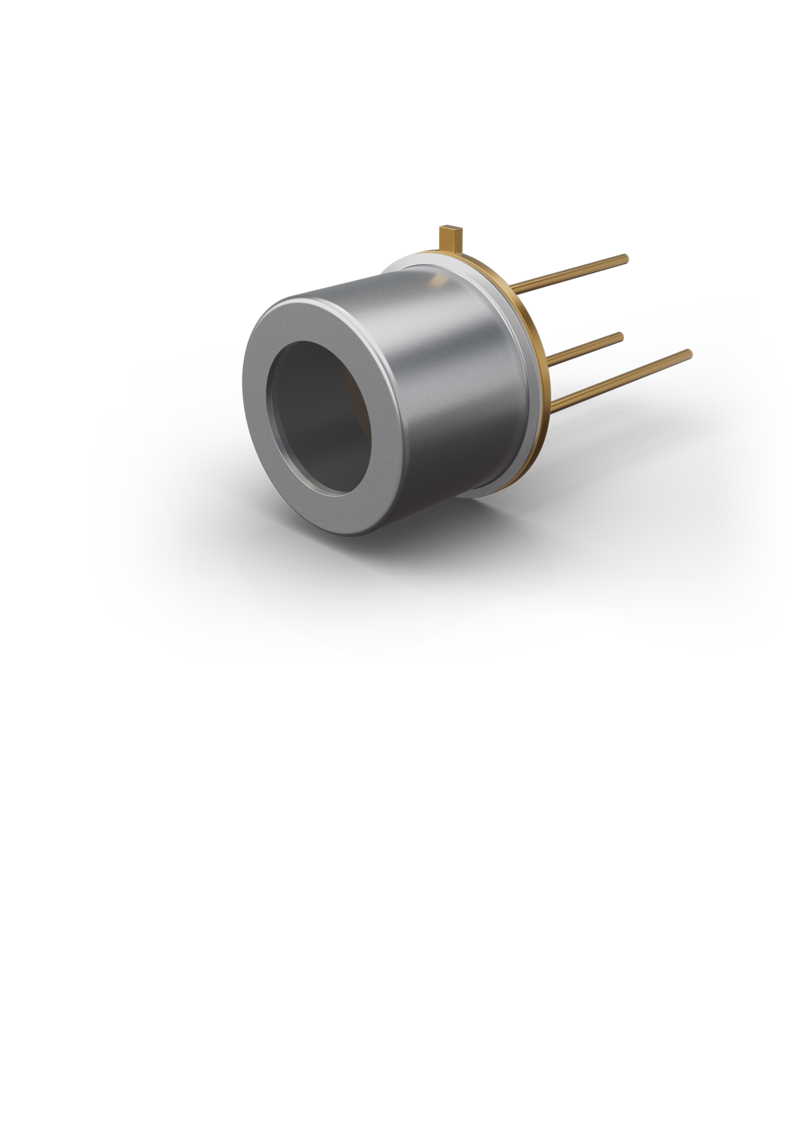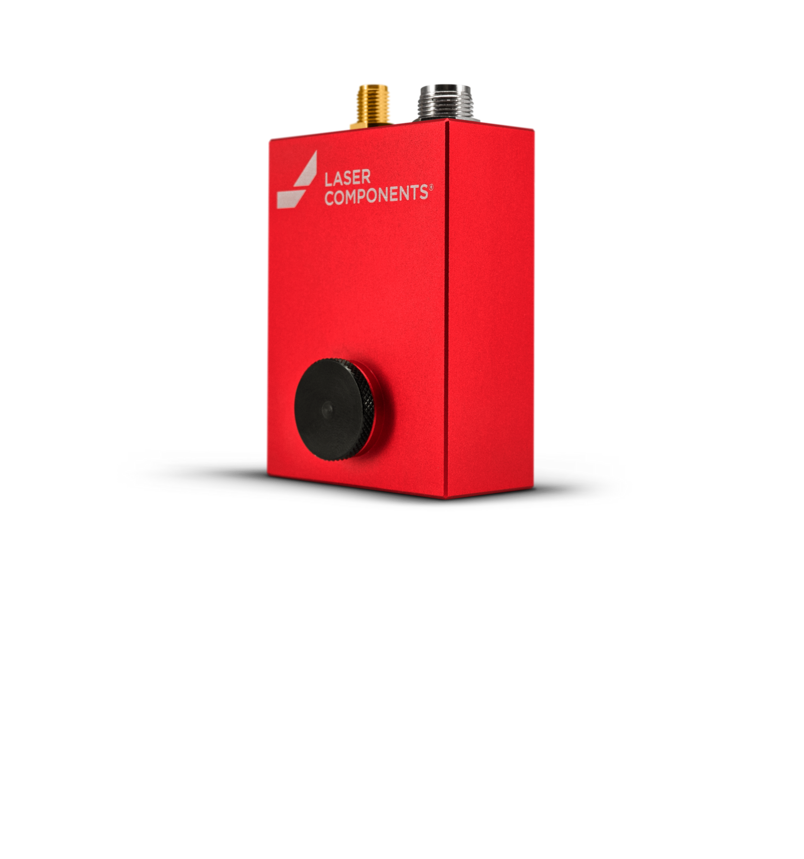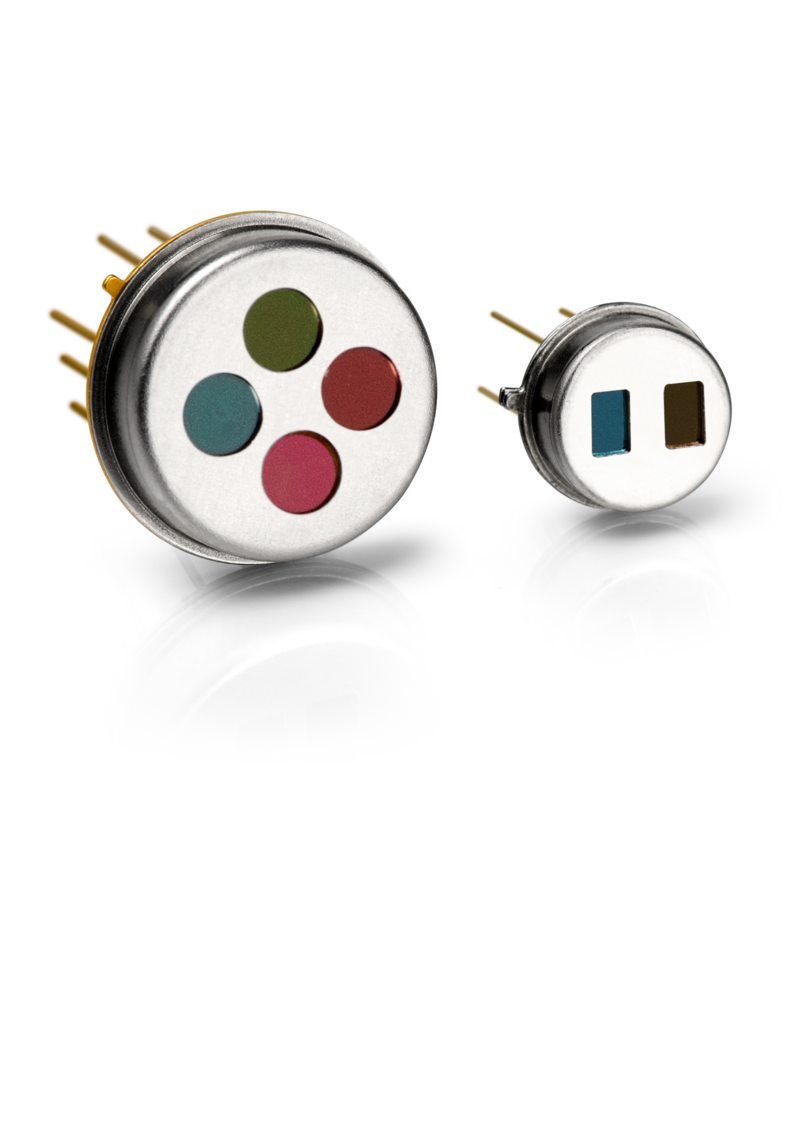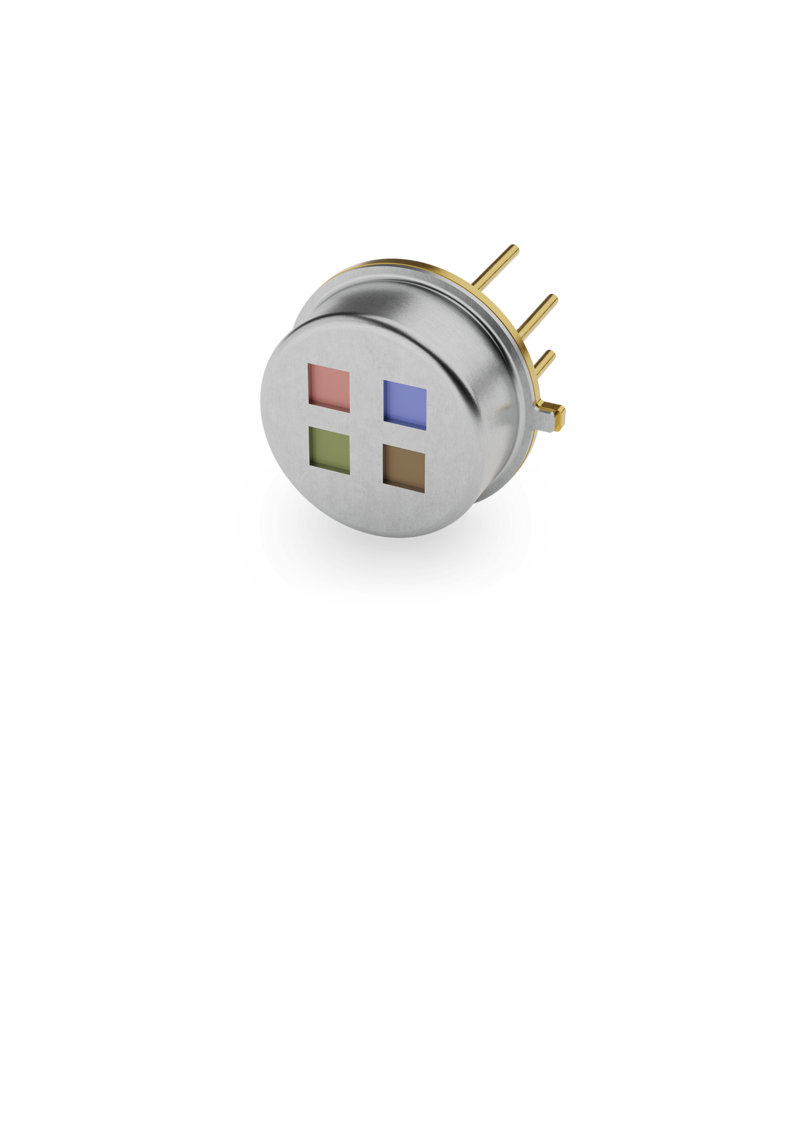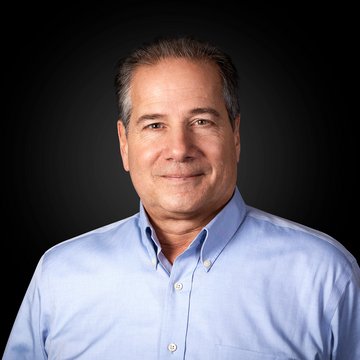Gas Analysis
Most gases have their own “absorption lines” at different frequencies of light and are targeted; using the Beer-Lambert Law to calculate the concentration. Laser absorption spectroscopy allows you to not only determine what gas is present; but also the concentration.

Non-dispersive infrared - NDIR
Most commonly used and simple gas detection made for Pyro Detectors

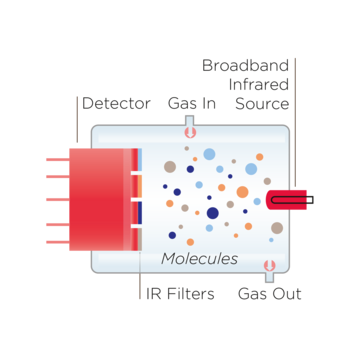
Non-Dispersive Infrared, NDIR
NDIR is by far the most commonly used gas detection method today due to its simplicity. Gas is passed through a measurement cell where a broadband IR source is used to emit light through the cell to a detector. The detector uses IR optical filters to filter the light into an “active channel” at the absorption wavelength of the target gas and a reference channel. One of the most common gases that is detected via this method is CO2 at approx. 4.3 µm.
THE ADVANTAGE OF NDIR
The advantage of NDIR comes from the strength of absorption in the mid IR compared to methods in the NIR. This strong absorption allows relatively low concentrations of gas to be detected with small path lengths and inexpensive components.
We can provide detectors that have more than one channel with many filter options, one channel as a reference and the rest for the gasses you would like to detect. We now offer a filter that enables infrared humidity measurements in many applications.
NDIR is also not without its challenges: selection of the correct filters to minimize crosstalk combined with the angular and temperature dependence these filters can cause undesired results.
LASER COMPONENTS has years of experience in this field, and our standard selection of filters has been carefully chosen to help you easily find the best filters for your application.
Tunable Laser Diode Spectroscopy - TDLS
Use PIN Detectors for this highly sensitive detection technique


TDLS is a highly sensitive detection technique capable of resolving low gas concentrations down to ppb. A tunable laser diode such as a DFB or VCSEL is used with PIN detectors and optics to target very narrow absorption bands. Popular applications in the NIR are oxygen, water vapour, methane and ammonia detection.
THE ADVANTAGE OF TDLS
TDLS has several advantages over NDIR including: faster acquisition times, high S/N ratio, and the ability to target specific gasses in a family. The disadvantage is that TDLS analysis is expensive compared to NDIR, despite pricing is decreasing.
Applications in MWIR and LWIR are catching up due to progress at laser sources.
MEASUREMENT PRINCIPLE
TDLS takes advantage of the fact that modern semiconductor lasers can be tuned in wavelength via temperature or current tuning, allowing scanning over individual gas absorption lines. Measurements can be referenced via the two zero values either side of the absorption line. By subtracting your reference values or monitoring the ratio between the signals detected to the original intensity the gas concentration can be determined via spectral analysis.
LASER COMPONENTS supplies detectors, optics and lasers to manufacturers of specialist TDLS equipment.
Areas of Use
What can be measured?
To identify the various gases a various choice of detectors is manufactured by LASER COMPONENTS. Depending on the gas to be detected, it is important to select the right bandpass filter. We offer both components and guide you through the selection process.
Some of the popular areas of use for gas measurements include:
- Pipeline inspection
- Exhaust gas measurement
- Breath gas analysis in medical applications (anaesthetic gas analysis) or security (breathalyzer test)

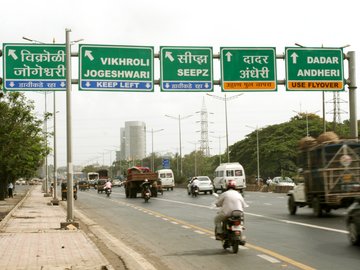
Cleaning the Streets, One Pollutant at a Time
As the world has struggled with declining air quality, spectroscopic measurements have been used to identify and prevent further air pollution.
Regulations worldwide have been implemented to limit CO2 emissions. Further measures have been taken to prevent other harmful greenhouse gas emissions such as NOx. Through the breakthrough of Indian scientist, Dr. T.K. Subramaniam, Tunable Diodes Laser Absorption Spectroscopy (TDLAS) has be in the fight for environmental efforts.
LASER COMPONENTS supplies detectors, optics, and lasers to manufacturers of specialist TDLS equipment.
Product Selection
Beyond Borders
Did you already know?
Examples from the field
Pipeline Inspection by Car
Everyone knows that Google uses street view cars to show 360° panoramas of many places worldwide. Nearly unknown is the fact that the cars are equipped with pullution sensors, a measurement technology to measure methane gas leaks.
Leak detection is very important in our days as gas leaks can lead to explosions, and even small leaks cause smog condition and global warming. [1]
[1] Authority: sustainability.google/operating-sustainably/stories/airview/ (07. Nov. 2023)
Did you know human skin has been used as a part of an infrared detection scheme for TDLS spectroscopy?
A group from Frankfurt Johann Wolfgang Goethe-University, Germany, has developed a method of glucose detection based on photothermal deflection.
A pulsed QCL is used on the skin, and due to the LWIR absorption characteristics of glucose the skin absorbs a certain amount of light; heating it up. This energy is transferred to a prisim via contact changing the refractive index and hence the total internal reflection. This minor change is then monitored by a second low cost probe laser. A spectrum can them be taken by tuning the QCL over a wide range giving the concentration of glucose present in the blood.[2]
[2] Authority: Pleitez M. et al., Photothermal deflectometry enhanced by total internal reflection enables non-invasive glucose monitoring in human epidermis. Analyst (2014) DOI: 10.1039/c4an01185f
Downloads & links
LASER COMPONENTS USA - Your competent partner for optical and optoelectronic components in the United States.
Welcome to LASER COMPONENTS USA, Inc., your expert for photonics components. Each product in our wide range of detectors, laser diodes, laser modules, optics, and more is worth every Dollar ($/USD). Our customized solutions cover all conceivable areas of application: from sensor technology to medical technology. You can reach us here:
116 South River Road
Building C
Bedford, NH 03110
USA
Phone: +1 603 821 7040
Email: info(at)




